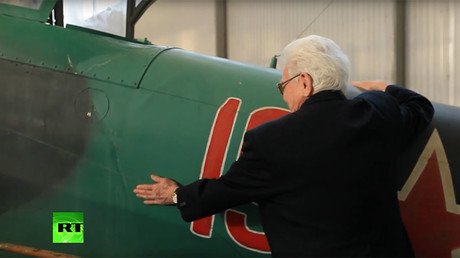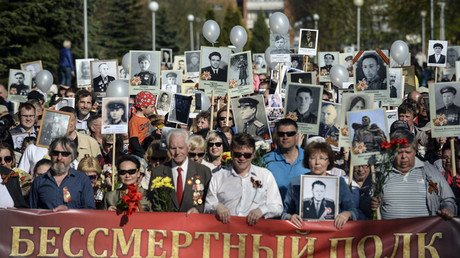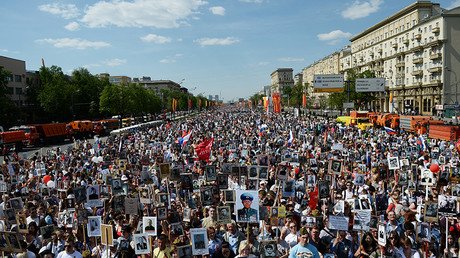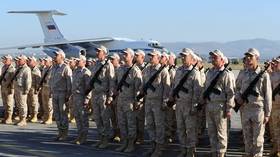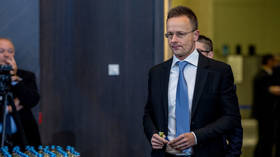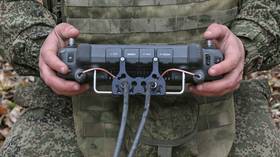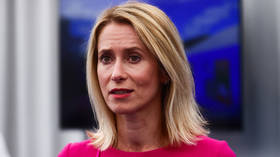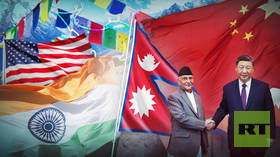'Grandma's WWII stories still send shivers down my spine’
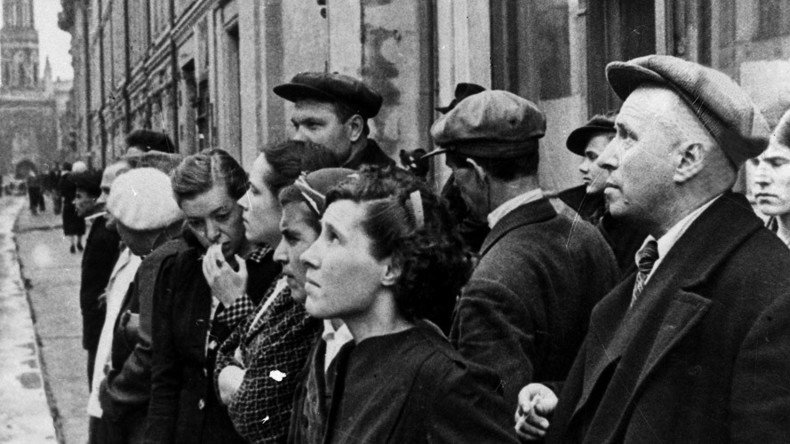
Russians all across the country are paying tribute to the victims and heroes of WWII. June 22 marks 75 years since Nazi Germany invaded the Soviet Union, starting the bloodiest conflict in human history, called the Great Patriotic War in Russia.
“I came here today to honor the memory of my two great uncles and my grandparents - who survived the Battle of Stalingrad, the horrors of the concentration camps and the rest of the war,” a woman who came to light a candle on the Moskva River embankment told RT.
She said the stories her grandmother told her about the atrocities of WWII “are still vivid in my mind, they send shivers down my spine and make me burst into tears.”
To mark each day of the war, which lasted from June 22, 1941, to May 9, 1945, when Nazi Germany’s capitulation was announced, 1,418 candles were lit in Moscow.
This is “a reminder of how hard it was for our ancestors to fight for and restore our shaken country, how they gave up everything for their Motherland,” another woman told RT.
The war cost the Soviet Union 26.6 million lives, according to official statistics. More than 8 million of them died on the frontlines of that war repelling the invasion of the previously-unstoppable Nazi war machine and pushing for the ultimate defeat of Nazism.
The Soviet Union bore the brunt of the Second World War with more than 75 percent of the Nazis' and their allies' forces in Europe concentrated on the Eastern Front. It was also the Eastern Front where the Nazi Germany suffered 74 percent of its war losses.
The Eastern Front also witnessed the greatest and the bloodiest battles of World War II. The Battle of Stalingrad that raged in southern Russia for almost seven months (from August 23, 1942, to February 2, 1943) is often considered to be the single largest battle in the history of warfare with more than a million personnel taking part on each side.
It was a turning point in the European theater of World War II as Nazi forces never regained the initiative on the Eastern Front. The Soviet Army pressed its military successes in another great battle of that war - the Battle of Kursk that took place during July and August 1943. This battle witnessed one of the largest armored clashes in history and resulted in a strategic Soviet success. After this battle, the Nazis were never able to launch a major offensive on the Eastern Front.
The war was costly not only for the army, but also for Soviet civilians. Almost 7.5 million Soviet citizens were deliberately exterminated by the Nazis in the occupied territories during the war and 4.1 million more died in the dire conditions of the occupation regime. More than 2 million people died while captured by the Nazis.
More than 630,000 civilians died from starvation and cold only during the Siege of Leningrad (now St. Petersburg). The Nazis and their allies blockaded the city for 872 days (more than two years and four months), depriving its inhabitants of any supplies.
In the worst period of the blockade, the food ration in the city amounted only to 125-250 grams of bread per day, with this bread being made for the greater part from cotton seed cake, wallpaper dust, cellulose hydrate and other “inedible substances,” according to historians.
Almost every Soviet family suffered a loss in that war. The post-war period started with a devastated country whose agriculture gross output plummeted by 40 percent as compared to the pre-war times.
“My grandmother shared a lot of details from her childhood with me explaining how hard it was for her - a little girl - to live in the post-war years with extreme hunger and other difficulties. That's why events like this are very important to me,” a woman told RT.
In the afternoon Russia's political elite laid wreaths at the Tomb of the Unknown Soldier memorial, by the Kremlin wall.
Today, hundreds of thousands of people across Russia commemorate the WWII heroes and victims on the national day of remembrance and grief. On that day, candles were lit not only in Moscow. About 3,000 people joined the action “A candle of memory” in the Russian Urals city of Yekaterinburg. The participants of the action also formed a giant word “remember” at one of the squares of the city.
In Sevastopol, people lit the first candles at 3:15am local time (00:15 GMT) – the moment the first Nazi bombs fell on the city in 1941. Night vigils, free concerts and other memorial events took place in cities all across Russia.
In the city of Kazan, 10,000 Muslims from various Russian regions held a special religious ceremony commemorating the victims of the Great Patriotic War.
The commemorative ceremonies were held not only in Russia but also in Belarus, particularly in the city of Brest, which bore the brunt of the first offensive on the Eastern front.
